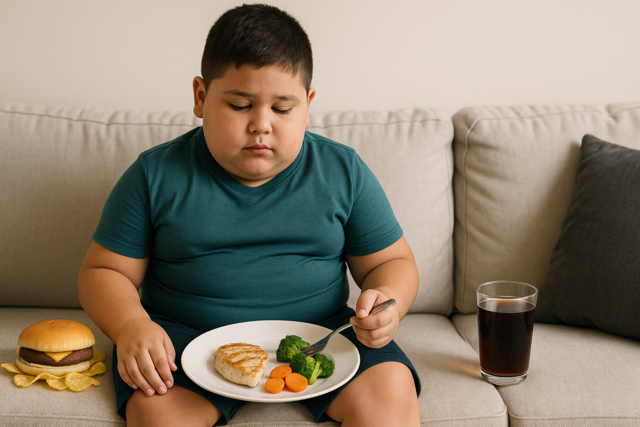Introduction
There's a saying that you are what you eat, and this is true for diabetics. Unfortunately, many people, especially newly diagnosed diabetics, believe that their forthcoming diet will be boring and bland. They believe they'll never be able to eat dessert again, unable to indulge or enjoy tasty treats like everyone else.
However, this is far from the truth. Diabetics have the option of enjoying a wide range of foods, although they do have to pay a little more attention to what they eat than non- diabetics. However, this article will provide a brief introduction into a diabetic diet and catering that diet to your tastes.
What You Eat Makes a Difference
Understanding the importance of diet is a vital part of managing diabetes in your life. Your doctor, a nutritional coach, or a registered dietitian will be able to offer a wide variety of information on certain aspects regarding a diabetic diet and menu planning. Terms like carbohydrate counting and exchanges are common in diabetes management and will help you not only eat correctly, but still maintain choices when it comes to the foods you can and should eat.
A dietitian will be made aware of your specific condition, your insulin or medication dosages, and will create a manageable diet plan for you that will provide you with the best overall health and wellness as possible.
Carbohydrates are especially important in a diabetic diet. You'll be instructed how to spread out the ingestion of carbohydrates throughout your day in order to help maintain your blood glucose levels. Your dietitian or nutritional coach will also help you determine adequate amount of fats, proteins and carbohydrates in your diet as well as suggestions on reducing complications such as hypertension.
In most cases, a diabetic will eat approximately 40% to 55% of their daily calorie intake through carbohydrates. Of course, this is just an average, and depending on medical condition and other factors, your doctor may recommend more or fewer carbohydrates.
The food pyramid for a diabetic is not that much different from other food pyramids and includes a variety of grains, fruits, and vegetables. Specific dietary requirements differ between experts on the exact amount of servings of meats, dairy products, grains, vegetables, fruits and fats in your diet, but generally, you will be instructed to eat:
- 6 to 11 servings of starchy vegetables, grains, legumes or breads
- 3 to 5 servings of a non-starchy vegetable
- 2 to 4 servings of fruit
- 2 to 3 servings of milk or yogurt products
- 2 to 3 servings of proteins found in meat or meat substitutes
Note - Diabetics are cautioned to avoid sweets and fats or to use such products sparingly in their diet.
-
Diabetic Meal Plans
Even though you follow a food pyramid or suggestions such as the servings listed above, you may find that your blood glucose levels spike if you eat certain foods. Everyone is different. Because of this, it's important for you to keep a food journal, especially if you're a newly diagnosed diabetic. Create a log or journal so that you can record the amount and type of food that you're eating, when you're eating them, and how you feel after eating. You may want to take a blood glucose reading with your monitor before you eat, and then 2 hours after beginning of your meal. Your levels should also be noted in your journal.
Beginning this habit can be quite difficult and limiting to some individuals, but over a period of time, you'll begin to realize what foods affect your body in different ways, as well as anticipate how you may feel after eating certain types of foods.
Diabetics will become familiar with the term exchange when it comes to diabetes management. An exchange list is a list of carbohydrates, meats, meat substitutes and fat found in certain foods. When using a dietary exchange list, individuals can easily determine the amount or grams of protein, fat, and carbohydrates in certain foods as well as their calorie level.
Some dietary exchange lists are very broad while others are extremely specific. A nutritionist or dietitian will try to meet your nutritional needs as well as calorie requirements while also keeping in mind your food likes and dislikes. The exchange list allows you to literally "trade" foods within a certain group with another. For example, if you don't want an apple listed in the fruit exchange, you might substitute it for 1/2 cup of orange juice. A diabetic can only trade items within similar exchange lists. For example, you can exchange fruits among the fruit list, but you can't exchange a fruit with a fat exchange.
The system may seem complicated at first, but actually is rather simplified and will make decisions regarding what to eat and how much of it you can eat easier when you first start to adapt you're eating plans and lifestyle to a diabetic diet.
Because carbohydrates are so important in the maintenance of your diabetes, many exchange lists offer the number of carbohydrate grams as well as carbohydrate choices that are available in certain exchange lists. Such lists are popular and are called a carb choice list. This list eliminates the need for individuals to read the exact amount of carbohydrates found in certain foods according to their labels and offers an easy way for individuals to translate and exchange foods into a "carb choice" approach to diet. In general, 15 grams per serving is a recommended amount of carbohydrates in one carb choice. Instead of counting grams of carbohydrates for the total daily diet, the carb choice plan will give you a certain number of carb choices allowed on a daily basis.
For example, a carb choices list may look something like this:
Exchange Equivalent
Carb Grams
Carb Choices
1 fruit
12 g
1 carb choice
1 starch
15 g
1 carb choice
Both the carbs choice and the exchange list may take some time getting used to, and some trial and error. Any new lifestyle or habit is difficult to learn and maintain, especially for individuals who are rather fond of their sugars and fats.
However, with the support, guidance and knowledge provided by your doctor, family support and dietitians or nutritionists, you'll soon adapt you're eating habits and foods to those that will most benefit your overall feeling of satisfaction, health and well-being.
As you gain more experience in the types of foods you eat, exchange lists, and carbohydrates, you may be able to add or detract foods from your diet also based on the type of insulin you use. There is no set time for doing this, but individuals who gradually become aware of how they feel and cater their dietary requirements to their age, gender, exercise and activity levels will find it easier to adapt carbohydrate ratio with a decrease or increase of insulin as needed by your changing condition.
-
Portion Control
Portion control is also very important for diabetics. We don't want to get you into trouble here, but being a diabetic doesn't mean that you can never have a nibble of candy or a small portion of chocolate cake ever again. However, it's best not to sneak "bad" foods into a diabetic diet until you have your diabetes under control and understand the importance of strictly following your diet. Talk to your doctor about having an occasional small slice of pie or other treat so that you don't feel so deprived. However, if your doctor says not, don't do it.
Portion control means maintaining specific serving sizes that cater to the appropriate intake of fats, carbs, proteins and dairy products that you should be eating. Some guidelines to help reference appropriate serving size include:
- The size of your clenched fist, a small apple or a baseball is equivalent to approximately 1 cup serving of fruit or yogurt
- A deck of cards is the appropriate size of a 3-ounce serving of poultry, meat, or fish
- The tip of your thumb from the knuckle upward is the appropriate size of 1 teaspoon of mayonnaise or butter
- A double-A battery or tube of chap stick is the approximate size of 1 ounce of cheese
In the beginning, you may feel like you're being deprived of adequate nutrition and that you're likely to starve, especially when you eat out with others and you see the size of their portions. However, understand that you need to maintain proper control over what goes into your mouth, and that in the long run, you're going to be healthier, feel better, and be happier about your choices.
While others are snacking on cakes, ice cream and fudge brownies, you can still indulge. For example, check out these snacks substitutes that are perfectly okay for you and equal 1 carbs choice or 15 grams of carbs, which will fit in nicely with your diet plan:
- 3 cups of air popped popcorn
- 1/2 cup of sugar free pudding
- Up to 20 baked tortilla chips with salsa
- A snack size sugar free serving of jello (with Cool Whip!)
Your doctor or nutritionist will also be able to offer you a list of appropriate and approved snacks that may surprise you.
Conclusion
Just because you have diabetes doesn't mean you won't be able to enjoy the foods you like. The key to health and wellness is moderation and attention to detail. You'll gradually learn how to maintain your self-control, your willpower and your diet through practice. Coping is a major part of dealing with and managing diabetes.































